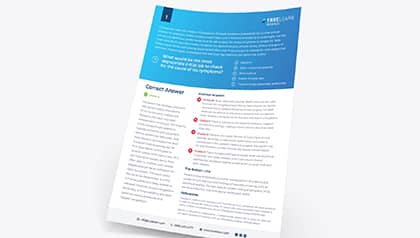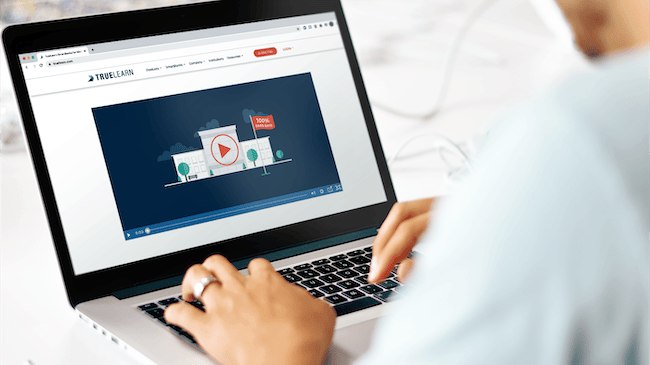A PRITE Study Guide to Test Your Best
The Psychiatry Resident in Training Exam (PRITE) is an educational resource for psychiatry programs and residents. Administered annually in the fall, residents take the PRITE three to four times throughout their residency to assess their progress and growing knowledge, as well as prepare for the American Board of Psychiatry and Neurology (ABPN) Certification exam.
If you’re one of the thousands of residents studying for the PRITE, we’re here to help you get started. Use our PRITE study guide to test your best!
PRITE Blueprint Overview
Each PRITE section focuses on a particular psychiatry component. Use this breakdown to guide how long you’ll spend on each area. The content areas covered and their corresponding number of items are as follows:
- Clinical Neurosciences (69 items)
- Neurodevelopment (10)
- Neuroanatomy (12)
- Neurophysiology (12)
- Genetics (35)
- Clinical Neurology (30 items)
- Diagnostic Procedures (13)
- Diagnostic and clinical evaluation of neurologic disorders/syndromes (12)
- Management and treatment of neurological disorders/syndromes (5)
- Clinical Psychiatry (201 items)
- Development and Maturation across the Lifespan (30)
- Behavioral and Social Sciences (15)
- Epidemiology (9)
- Diagnostic Procedures (15)
- Psychopathology and Associated Conditions Across the Lifespan (39)
- Treatment across the Lifespan (45)
- Consultation and Collaborative-Integrated Care (10)
- Issues in Practice (20)
- Research and Scholarship Literacy (9)
- Administration and Systems (9)
View the PRITE blueprint for a complete breakdown of subdomain items.
3 Resources for PRITE Preparation
PRITE exam preparation is no joke. That’s why we’ve compiled the top three resources residents use to study for the exam.
1. Kaplan and Saddock’s Synopsis of Psychiatry
This best-selling textbook thoroughly covers clinical psychiatry. From DSM-5 diagnostic tables on major psychiatric disorders to extensive use of case studies and illustrations, it’s a great resource to reference when studying for the PRITE exam.
2. TrueLearn’s PRITE Question Bank
A PRITE question bank is essential to engaging with PRITE-style questions, refining your test-taking strategy, building exam stamina, and foreseeing how you’ll do on exam day. With 1,000+ questions mapped to the PRITE content outline, TrueLearn’s PRITE Question Bank has helpful features for you to review what you missed, understand the correct answers, and view your performance metrics in real time.
3. Digital Flashcards
You can never go wrong with flashcards—especially when they’re digitally accessible. You can make your own with TrueLearn’s Create-Your-Own Flashcards, build personalized study decks, review using spaced repetition, and track progress within a single, streamlined platform. It is a complete solution designed to enhance memory retention and support efficient, focused learning.
Flashcards are more effective when used over a period of time because they promote active recall in spaced intervals, increasing your retention of material.
Sample PRITE Study Schedule
Your PRITE study schedule should span a few weeks to aid in the long-term retention of information. We recommend breaking down each major topic into subcategories and dedicating more time to robust areas like Clinical Psychiatry. Slow and steady wins the race, after all.
- Week 1–2: Neuroscience
- Week 3: Neurology
- Week 4–7: Psychiatry
- Week 8: Review weak areas
- Week 9: Refresh
- Week 10: Test!
How long is the PRITE exam?
The PRITE exam has 300 questions. It is administered in two parts and the standard time limit is 2 and half hours for each part.
3 Tips to Build Up Test-Taking Stamina
- Take a practice exam. TrueLearn’s PRITE Question Bank simulates the testing environment. Use it to refine your test-taking skills and work your way up if you find it difficult to complete the exam in one sitting.
- Keep your eye on the prize. Each practice exam is a learning experience. Review your performance dashboard to see how you perform and re-evaluate your approach for your next attempt. You may find you need to eliminate distractions to focus.
- Pace yourself. Don’t look at the clock and stress about time if you get stumped on a question. Make your best guess, or come back to it later. It’s best to take your time and allow yourself to thoroughly read each question and answer. You may skip over important information if you’re just scanning through the exam. Take a deep breath and carry on. You can do it!
Why Studying for the PRITE Matters
Your score on the PRITE allows you and your residency program to map your progress. Your score will be reported in comparison to your peers, ensuring you’re on the right track for success and identifying what you may need to work on.
Overall, studying for the PRITE matters because it will help you perform well, allow you to stand out, and show that you can keep up with fellow residents.


